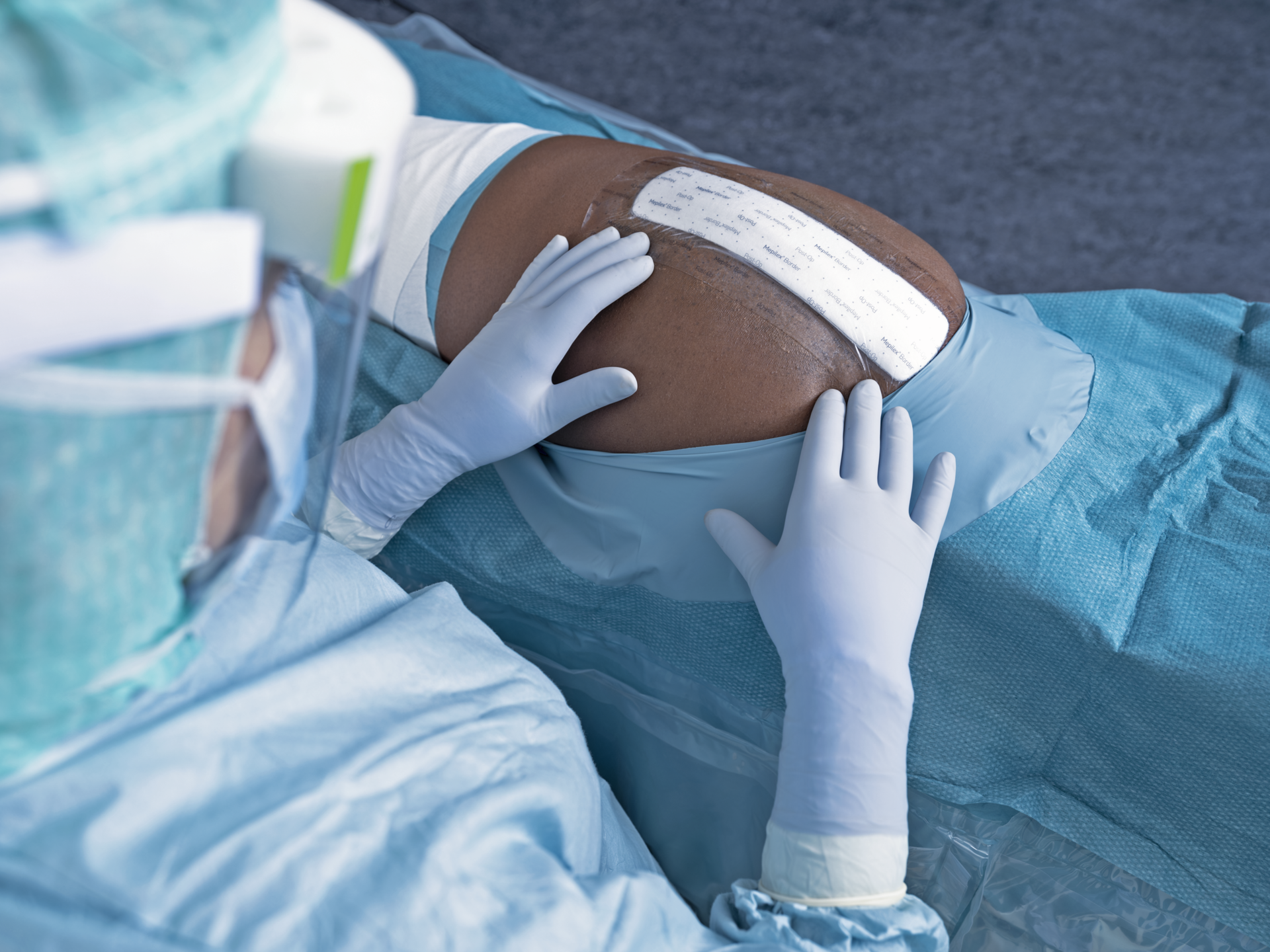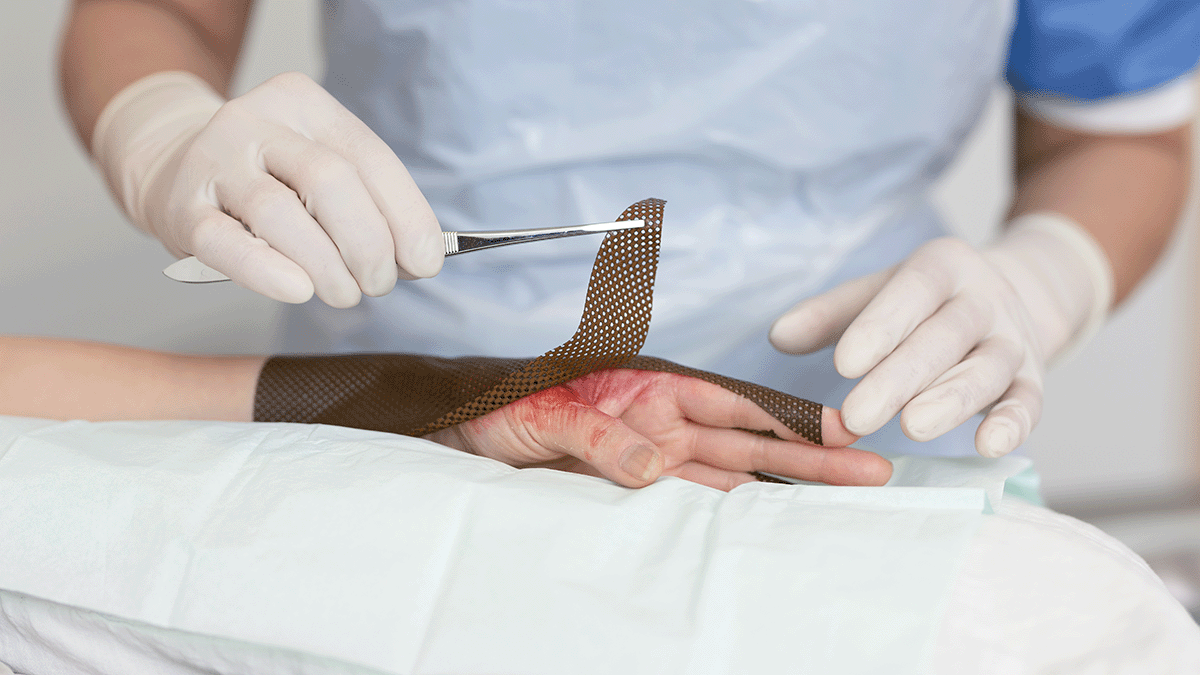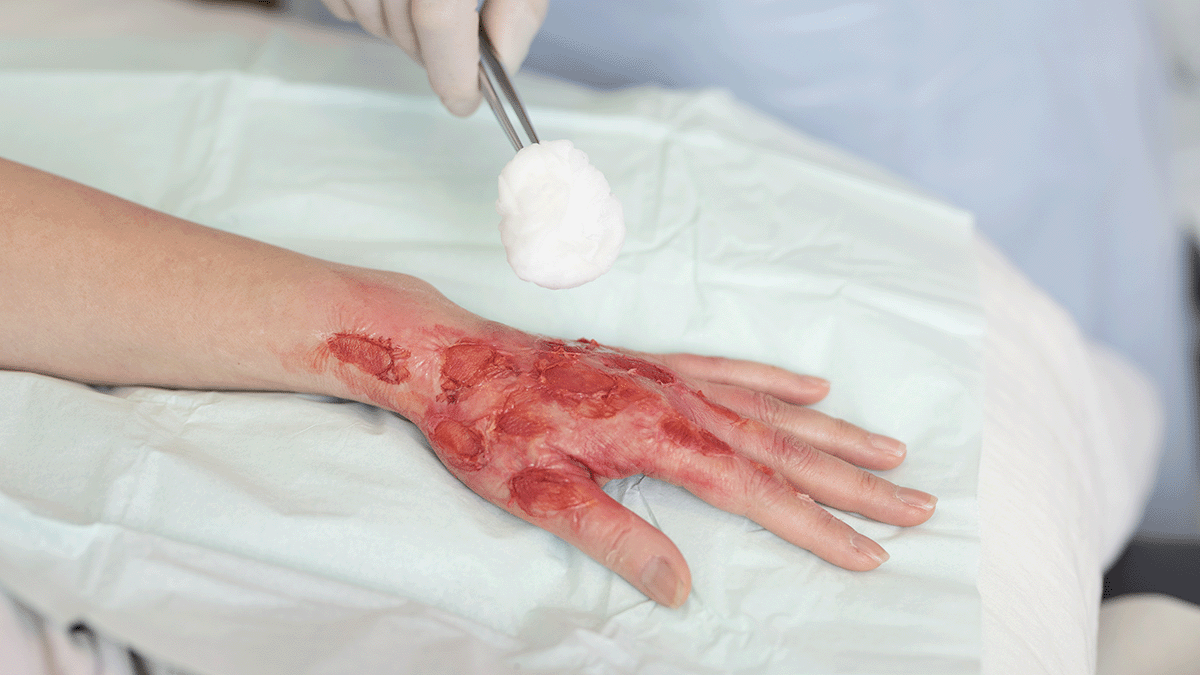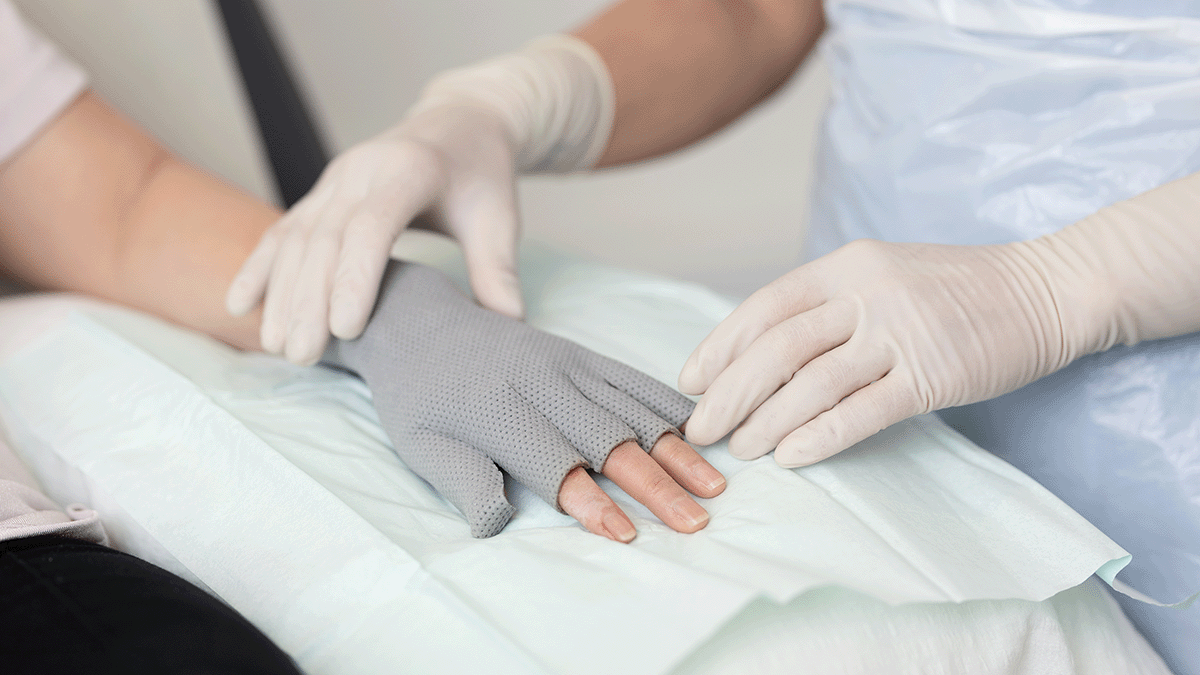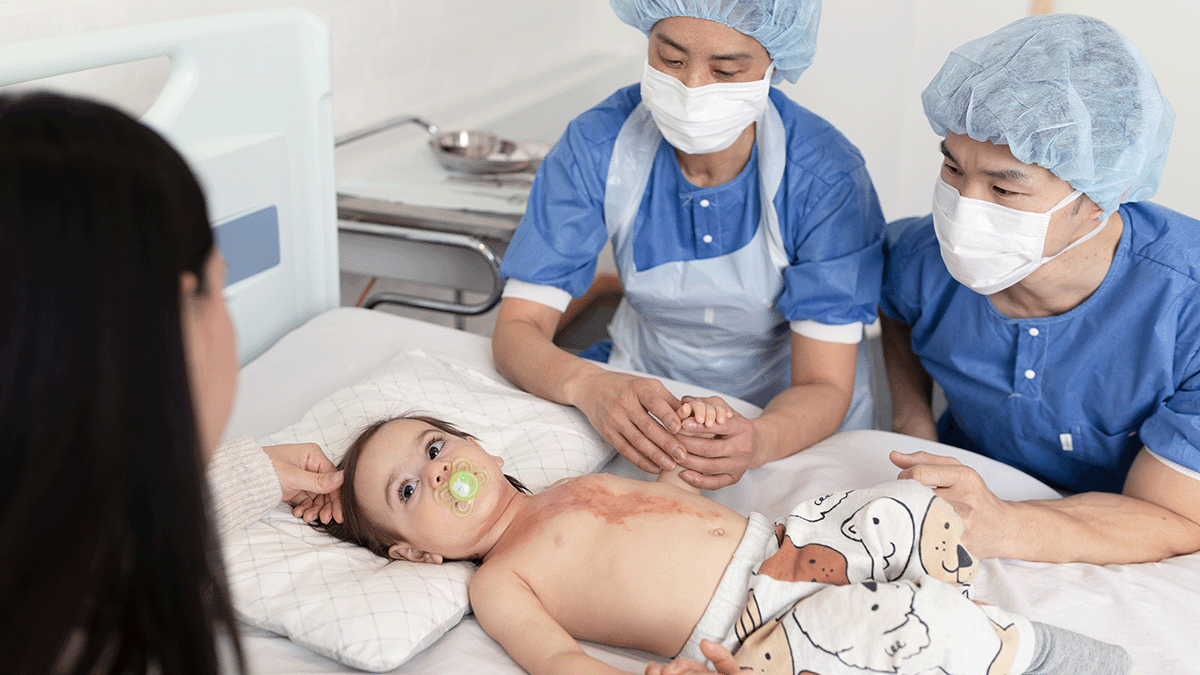One particular symptom is excessive wound fluid leakage, sometimes informally described as “leaky legs” or “wet legs”2 when patients explain their symptoms. But wound fluid leakage is a symptom of an underlying problem – and it should not be accepted as the norm.
Hard-to-heal wounds like VLUs impact patients in many different ways. These wounds often go improperly diagnosed and thus fail to heal, which leads to continuous production of a high volume of wound exudate. Both the wound and the presence of exudate signficantly and negatively impact such patients’ quality of life3. The possibility for leakage, soiling clothes and bedding, malodour, and other embarrassing challenges make VLUs – undiagnosed or not – physically problematic as well as psychologically traumatic. Dismissing ongoing excessive exudate as “normal” and treating “leaky legs” (and this expression) as a diagnosis is problematic and does a disservice to patient health and quality of life2.
Wound fluid leakage: A symptom, not a diagnosis
Wound leakage and exudate management is one of the most challenging side effects of VLUs. Yet, with a progressively healing VLU, exudate levels should become more manageable with time. However, if a patient has been left without a diagnosis, which would help guide treatment for venous disease, the problem of “leaky legs” may become normalised without further investigation. Patients frequently report leakage as a symptom, and unfortunately, rather than getting to the root cause of the excessive exudate, heavily exudative wounds are treated without further diagnosis. Instead, the copious amount of exudate should act as a clue for understanding a deeper cause, which is likely venous disease but may also be affected by comorbidities that affect healing.
For healthcare professionals, it is critical to support healing by going beyond the surface to do two things: one, perform robust wound assessment, taking the whole person/patient into account, and two, understand venous disease and how it is linked to ulceration.
Striking the exudate balance
When treating venous leg ulcers, a moist wound environment is important, which means that a certain amount of exudate with the right composition plays a crucial role in wound healing. The type and volume of exudate tells a story about the wound and can indicate its potential to heal7. Understanding what makes exudate healthy and unhealthy is an important part of treatment.
Healthy exudate is straw-coloured and should decrease in volume as wound healing progresses. Wounds that are slower to heal present with too much or abnormal exudate, and are likely signs that underlying venous disease is present2 and requires diagnosis and treatment beyond just trying to take care of or mask excess exudate.
Typical treatment for supporting healing includes appropriate compression therapy (if not contraindicated) and infection management (if present)2.
Quality of life issues due to leg ulceration
Nevertheless, the presence of excess exudate, while indicative of a more systemic problem, is by itself negative for VLU patients. Not only do these patients have to worry about the possibility of more frequent – and potentially traumatic – dressing changes to manage the overabundance of exudate and the associated pain and skin maceration, odours, damage to clothing and bedding, but they also experience psychological issues, ranging from social isolation and depression to self-esteem problems4, 5, 6. In addition, there is also a possibility of a negative socioeconomic impact on their lives, as they stop going to work or lose their jobs8.
In addition to these quality-of-life issues, the lack of improvement in the wound and exudate can lead to worse problems. First, patients sometimes take matters into their own hands, using inappropriate products to contain wound leakage, which may lead to more serious complications. And second, increased pain from periwound skin damage and an increase in infection incidence create greater discomfort, further delayed healing, and sometimes in patients being prescribed multiple courses of systemic antibiotics because the root cause of the local infection is not addressed9.
Without healing and a proper diagnosis and course of treatment, patients will require increased clinical interventions2, which further impacts patients’ quality of life and burdens healthcare systems.
Treating the underlying cause of leaky legs
Appropriate assessment of exudative wounds and abnormal exudate as well as a complete assessment of the patient as a whole is needed to ensure that a proper diagnosis is achieved. Until the root cause is identified, the excess leakage problem will persist and the wound may go unhealed, creating a negative impact on patient health and quality of life indefinitely. The patient is entitled to a proper diagnosis and treatment that gives their wound the best chance to heal.

